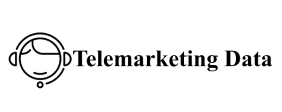Email Marketing in the Financial Advisory Industry: Getting Started
Marketing success
Email marketing is an invaluable tool to help financial advisors nurture their clients over the long term and provide them with lasting, tangible value. But how do you ensure your emails are read? That they don’t disappear into a mountain of junk mail or advertisements?
This article explains how to prepare and implement a successful, unique email marketing strategy that has a strong impact on customer satisfaction.
What does an email communication strategy look like in the financial advisory industry?
Email is a powerful communication and engagement channel that generates a strong return on investment. According to the latest studies, a company can expect to earn €36 for every euro invested in email communication.
This is partly because it is
a versatile channel that can elenco telefonico spagna inform, assist, sell and educate the customer. Newsletters , for example, can share exchange rates or financial market news, among other useful information. Automated or personalized emails can share portfolio updates or remind customers that they have an appointment.
Sending a reminder email before an annual review, for example, can encourage a client to invest in a specific account or portfolio. Regular campaigns are a great way to build relationships with your prospects and encourage them to book an appointment. Each email strategy will be different depending on whether it targets prospects, specific client needs, or a defined maturity level in the financial journey.
Starting your first campaign: 8 steps
Email marketing is a method recognized by financial advisors to generate leads. But how do you prepare a successful email campaign? Discover our tips and best practices for email marketing before preparing your first campaign.
Step 1: Define a strategy and target audience
Email marketing is a constantly evolving field that offers many opportunities for financial advisors. First, think about the customer profile you are targeting. Define the Marketing Automation model that best matches your target audience. What are the major financial milestones or life events your clients are going through? Take the time to think about what engages and motivates your subscribers, particularly in terms of added value and lead generation.
Step 2: Segment your subscribers
By getting to know your audience and categorizing them into geographic, demographic, psychographic, or behavioral segments, you optimize your email open rate. Personalized emails, where the message is tailored to the recipient, have a 139% higher click-through rate than others.
Step 3: Take advantage of the social element
Use your emails to communicate about your services in an accessible and honest way. The best way to do this is to include personal touches in the subject line and in the message: information on the average return on investments made by the client, the achievement of a financial goal, testimonials from other similar clients… Integrate reviews, data, testimonials in your emails. Show yourself to be trustworthy by displaying your successes, and never hesitate to ask your clients to recommend you.
Step 4: Include an obvious call-to-action
What action do you expect Medidas urgentes que deben adoptar las from your customers? What results do you hope to see from your campaigns? Offer your readers opportunities to engage with your financial services and the content you offer them (white papers, webinars, etc.) in your follow-up emails. If your emails contain interesting content, the call-to-action will do the rest.
Step 5: Adapt the format to the reader
Present your information in a way that makes it accessible to the client. Try to tell a story about what you offer, sharing the benefits of your consulting services, through clear but concise descriptions.
Your emails should be compelling enough to encourage people to open them, and interesting enough to read them. Include a call-to-action around a tempting offer or incentive promotion on your financial structuring or investment services. Include a link to your website or a landing page where the customer can learn more about your company or schedule a phone appointment.
Step 6: Choose your moment
According to a Databox survey of communications executives , about 33% of campaigns are weekly and 26% are monthly. There is no specific rule to follow: monitor the results and be ready to adjust the frequency accordingly. Measure the effectiveness of each campaign through metrics like unsubscribe rate, click-through rate, and open rate.
Step 7: Encourage feedback and learn from it
Two-way communication is essential to building relationships with your customers. Encourage subscribers to click “Reply,” call you, complete a survey, etc. A/B testing (sending multiple variations to see how your subscribers react) is also a good habit.
Step 8: Identify the right tools and use them
The best Marketing Deb Directory Automation tools are those that offer pre-programmed email templates and an easy-to-use editor, allowing you to quickly create personalized and ultra-professional campaigns that will engage your customers. With the right software, you can stay in close contact with your audience, manage your






